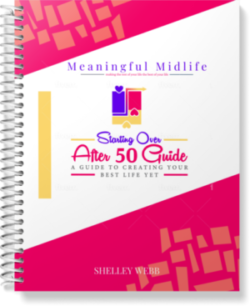
There may come a time when the ability to independently walk, dress, cook, or bathe becomes increasingly challenging for an aging loved one. How do you assess if it is safe for them to remain in their home without any assistance?
There are some warning signs to watch for in the home that may indicate some problems. When you visit seniors be aware of these key indicators that additional management help may be needed:
- Signs of Neglect in the home-dirty dishes, bad smells in the home, spoiled food or no food in the house, piles of dirty clothes, broken dishes appliances for extended period of time, lots of bugs or rodents
- Physical Risks-Lots of clutter, obstacles, that might cause a fall. Balance problems or multiple falls. Inability to climb stairs, get in and out of tub, bed, or chair safely. Lifting things like laundry. Medical issues that might inhibit the ability to do self-care like bathing or dressing. Poor eye-hand coordination that could cause accidents.
- Emotional-For seniors a lowering of mental or physical function due to aging or medical issues can create an increase in anger, frustration, anxiety, or loss of temper.
- Psychological-Coping with medical issues, aging, loss of independence, can create increased isolation, depression, sadness. It can also create feelings of guilt about being a burden for caregivers. The role reversal occurring when an adult child becomes a caregiver for a parent can be a challenging adjustment for all concerned.
- Social Isolation-Can’t go out in the community to shop or do errands. Don’t attend activities, go to church or see friends anymore. Don’t express any interest in doing things outside of the home.
- Change in Self Care Status-Senior begins having bowel and bladder incontinence.Clothes are dirty or on an ongoing basis, are torn or in need of repair. Senior stops shaving, bathing, or showing interest in their appearance. Sudden weight loss or gain can indicate problems with cooking, grocery shopping or eating properly.
- Driving-Car or garage seem to be damaged without an explanation. Dents or scrapes in fence mailbox. Multiple traffic tickets can all indicate a loss in function in terms of the ability to drive.
What do you do if you find that these issues begin to arise? How do you begin to approach the difficult topic of getting additional help or the possibility of moving for an aging loved one who is at risk? This is a very emotional territory. It involves questions of loss of independence, control of one’s life, loss of body function, losing a home and traditional, familiar way of life. It also evokes fear and anxiety about what the future will be like. It must begin with a conversation that includes the following components:
- Listening-Ask about their perceptions on their health and their ability to do day to day tasks. What are their fears/concerns about aging or health problems? Do they feel they need help with anything? Gage their awareness of their abilities and limitations. Be reassuring, supportive, empathetic, and withhold judgment. Try not to personalize responses if they come from a place of anger.
- Share-Share your observations, fears, and concerns without making judgments. Come from a place of love and support with the assurance that the next step will come from a place of collaboration with them. Make it a team approach.
- Enlist Help-If it does appear that your loved one is having difficulty recognizing the risks enlist the help of a doctor, priest, neighbor, friend who your loved one trusts and respects. You also have the option of bringing in a geriatric care manager to help offer insights about what help is needed and where to find the proper resources and places to provide the appropriate support.
- Finances/Insurance-Evaluate what insurance is available and what it covers. For example, medicare may pay for a physical therapist to come in home to help with mobility. Also look at any coverage for additional levels of care like nursing homes. It is contingent on diagnosis and demonstrating that care is needed. Also, assess what assets are available to help cover the costs of whatever additional support may be indicated.
- Resources-Examine what resources are in the community that can fill the care gaps you have uncovered. It could be anything from home healthcare, to assisted living, to a skilled nursing facility. You can find a local geriatric care manager @ http://www.aginglifecare.org/ You can also consult your doctor, local senior center, area on aging office, to get help finding information on available options and resources.
LEARN TO LOVE YOUR LIFE AGAIN
 Do you feel like you need to hit the REFRESH button on your life? Download our free guide and begin to create your best life yet!
Do you feel like you need to hit the REFRESH button on your life? Download our free guide and begin to create your best life yet!



Nicely done. Eldercare is still an emerging mainstream topic. So many #babyboomer #caregivers are dealing with the needs of generations both older than them and younger than them. We have generations of preparation to manage children, youth, and even our own retirement. But individual reserves to then ALSO manage an even older generation, especially when the relationships are made more difficult by illness and other challenges, are low. Personal coaching is highly recommended for those that are not dealing with “cookie-cutter” situations. #Caregiver Care needs to be championed too.
“Wonderful suggestions! Thanks a lot for sharing this, Iris. Caring for seniors begins at home. Family members need to be vigilant at all times and look for any signs of physical, cognitive or emotional decline in their senior loved ones. It’s important to consult a physician on all matters.”